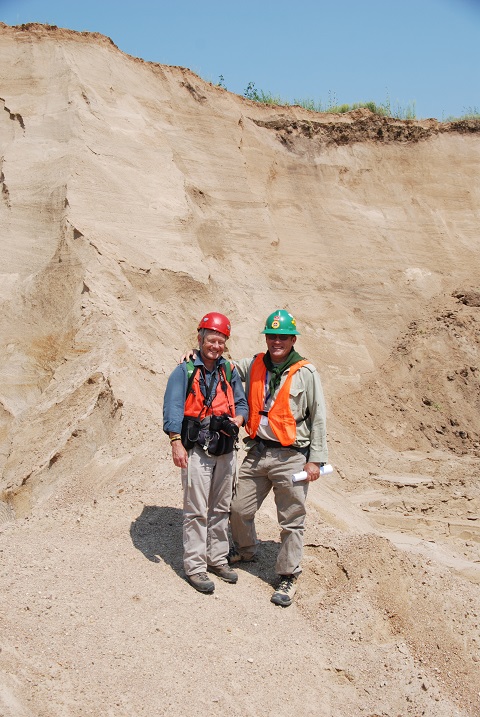
Two UNL professors recently took their teaching abilities outside the classroom and into the rivers of southeastern Nebraska.
"We chose Nebraska as the focus for the course because it has a rich inventory of modern river systems and ancient river deposits preserved in its rock record," said Chris Fielding, professor and Coffman Chair of sedimentary geology in the Department of Earth and Atmospheric Sciences.
Last year, Fielding was approached by Nautilus, an organization that provides geoscience training to the oil industry, to formulate a course. Nautilus offers more than 300 courses to oil industry professionals — 100 of these are delivered in the field, giving participants hands-on experience with the course material.
Fielding asked Matt Joeckel, professor of geology in the School of Natural Resources, to join him as a course instructor.
"I asked (Joeckel) to participate in this endeavor because he has a wealth of knowledge on the geology and geography of Nebraska," Fielding said.
Fielding and Joeckel developed the course, "Fluvial Sedimentology and Stratigraphic Architecture Based on Observations of the Platte, Loup and Elkhorn Rivers," which Nautilus then adopted and offered as part of its curricula for the first time this year.
"Most of the course deals with understanding modern rivers and applying that knowledge to ancient river deposits and petroleum reservoirs in sandstones," Joeckel said.
Many petroleum reservoirs are located in ancient river sediments that have been turned into sedimentary rock. By studying modern rivers and their sands, course participants gain an understanding about ancient rivers and the sandstones that fill up those channels and valleys.
"What we're doing is somewhat unique," Joeckel said. "We're taking people to look at modern rivers and modern deposits of those rivers in great detail so that they can see three-dimensionally. Literally right in front of their eyes, they see what modern rivers do and what kinds of sediments they leave behind."
In addition to looking at the deposits of modern rivers, participants also examined ice age river sediments that serve as aquifers. Since petroleum is a fluid like water, understanding aquifers can be translated to understanding oil and gas reservoirs.
"When we study those aquifers, we don't just learn about Nebraska's groundwater and how to manage it," Joeckel said. "We also learn something that is translatable to the search for oil and gas."
Eleven participants attended the course, which was held Aug. 18-22 in various locations across southeastern Nebraska. Participants hailed from Austria, Brazil, Canada, Denmark, Germany and the United States.
The first three days of the course were based in La Vista. Morning classroom sessions were followed by afternoon field trips to view modern and recent fluvial environments and sediments at Fort Calhoun, Boyer Chute and Camp Maha near Plattsmouth. They also visited the confluence of the Platte and Elkhorn Rivers near Gretna.
After a day in the field near Fairbury to view sand and gravel exposures in the Powell pit, the course moved to Nebraska City where classroom sessions were enhanced with a field trip to examine the Pennsylvanian Indian Cave Sandstone near Peru and at Indian Cave State Park.
"The experience of teaching in an intensive mode both in the classroom and in the field was exhausting, but very rewarding," Fielding said. "The atmosphere was sociable and friendly throughout. We thoroughly enjoyed ourselves."
Fielding said that he anticipates the course will be offered on an annual basis, which would mean continued attention to a state that has a plethora of geological knowledge to share.
"Geologically, Nebraska is much more relevant than even most geologists would realize," Joeckel said. "Discussing ideas about rivers, particularly rivers in Nebraska, with professionals is an opportunity that we almost never get to have out in the field — and it's a huge opportunity."
— Mekita Rivas, Natural Resources